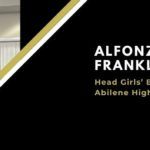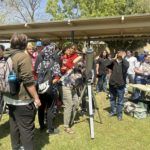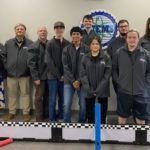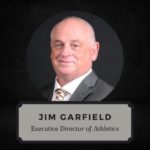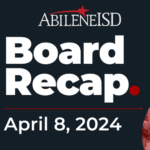When Chelsea Rico walked through the doors at Stafford Elementary School last August, she felt like she was starting her career all over again.
Part of that was true.
While Rico wasn’t starting over in a new building, she was starting over on a campus that had undergone a dramatic change, a school with a renewed purpose and direction.

Chelsea Rico
“I was nervous and scared,” recalled Rico, who is in her ninth year at Stafford (formerly Lee Elementary School). “I’ve spent my entire career here, but suddenly I didn’t really know most of the people on my own team. I felt like I had been a leader and outspoken in a good way but walking in here last August I didn’t want to be the loud person. So, I’ve taken a backseat and I’m listening to everything that’s being said and paying attention to everything that’s going on.
“I felt a little bit like the new kid in school,” she continued. “Not in a bad way, but this year is certainly different. This year it feels like we’re all new, and that’s exciting. And now that we’ve been through a year of this model, I’m looking forward to the 2022-23 school year because now we all know each other, and the kids know what it means to grow. I’m looking forward to being able to celebrate their growth with them.”
To know what Rico is talking about, one must go back to the fall of 2019 when it became apparent to AISD administrators that they had to do something about then-Lee Elementary School, which was struggling academically. In August 2019, the district announced the school received an “F” in the State Accountability System for the 2018-19 school year.
Drastic measures had to be taken, and that’s when AISD Superintendent Dr. David Young and other district administrators – as well as incoming principal Melissa Scott – took a trip to Atlanta to visit the Ron Clark Academy. The Academy is a non-profit middle school that was co-founded in 2007 by a pair of former National Teachers of the Year: Ron Clark and Kim Bearden. The school has students from grades 4-8 who come from a wide range of economic and social backgrounds.
What makes the Ron Clark Academy unique is that it’s a Model Teaching School. Teachers in the Academy’s setting are comfortable with strangers walking into their classrooms to see their teaching methods. They’re comfortable with fellow teachers walking into their rooms to talk about ideas and watch instruction taking place in real-time.
That’s what AISD administrators were looking for in teachers at what would become the district’s own Model Teaching School. Teachers from across AISD and outside the district were interviewed, and several new teachers moved to the campus for the 2021-22 school year.
Last summer, most of the Stafford staff and several AISD administrators went to Atlanta to visit the Ron Clark Academy and see the school in action. It was a transformational visit for the entire group.

Jana Walker
“To be there with our staff last summer was phenomenal,” Scott said. “When you’re watching it individually, you’re blown away by all of the different things they’re doing in the classroom and how they’re engaging students and thinking outside the box. The culture of the school is like nothing I’ve ever seen. To be able to see it and have that shared experience with my teachers was a great way to get people committed and form great relationships because they were coming from different places, different schools, and in some cases, different school districts. That shared experience was important to what’s happening now. We were able to see the vision for Stafford, so instead of me trying to explain what I want in their classrooms, they saw it and knew what we wanted.”
For Dr. Young, the experience of returning to Atlanta – this time leading the Stafford staff through the Academy – was eye-opening.
“That was like being a sponsor on a GT (Gifted and Talented) field trip,” he said. “We had some ideas about what we thought (Stafford) could be, but on that trip – listening to conversations between teachers on the bus or in the hotel lobby – their vision was much grander than mine, and what they’ve accomplished this year is much more significant than what I could have hoped for in the first year. There’s excitement on the faces of the kids and the faces of the teachers, and that’s awesome. This (campus) was a great place before, but there’s a different feel about it now.”
One of those teachers on that trip to Atlanta was Taniece Smith, a veteran educator who is in her first year in AISD. She moved to Abilene last year from Tokyo, Japan, when her husband was assigned to Dyess Air Force Base. Smith interviewed for a job at Stafford, and the fifth-grade science and social studies teacher made the trip to Atlanta not long after she was hired.
“That was the first time I met my colleagues, and it was an amazing experience,” she said. “We shared rooms and got to know each other on a personal level, which was fantastic. We didn’t just see education for what it is traditionally, but for what it can be when you think outside the box.”
One of the things that Scott and her team took from the Ron Clark Academy year is the “House System,” which is a tool used to create a positive climate and culture for students and staff. The system provides learning and leadership communities for schools. Each House has unique properties such as its color, symbols, nation of heritage, history, and more. Over time, each House starts to take on its values and personality, driven by the culture of the students and staff within it.
“Teaching the students about the different Houses and the different characteristics has been great because they’ve completely eaten that up and it’s been motivating for them,” Scott said. “It creates smaller communities within a larger school, so our kindergartners are connected to staff members they might not have seen or interacted with, and they can connect with our fifth-graders. It’s a way for us to build that camaraderie that means so much on every campus.”
The campus had a House Party in December that even involved Dr. Young, who is now part of the House of Altruismo. The name traces its origins to the rainforests of the Amazon, where a group of powerful Brazilians was given the name because of the Portuguese meaning behind it: “the Givers.” According to the Ron Clark Academy website, this special group is known for striking a balance between bold strength and altruistic giving — a team that knows that real power comes not from looking out for yourself but from empowering others.
“What the House system has done is give every student the connection to the campus and a connection to some of the staff they might not have connected with previously,” Dr. Young said. “I’m an example of that. I’m a member of house Altruismo, and I went over to the Altruismo Christmas party wearing my black T-shirt and had a great time. There’s a connective tissue that exists, and the opportunity for these teachers that have been selected to open their classrooms and have people come and visit and things like that is such that I’m starting to get questions from other school districts about our model and why it’s been successful.”
Aside from the addition of the House model, teachers on the campus have employed different tactics in and out of their classrooms this year. For instance, they’ve moved classes outside or into hallways. They’ve opened their rooms for other teachers to sit and observe. And they’re working together to figure out the best ways to help students learn.
It’s a model teaching environment on a smaller scale than the Ron Clark Academy, but it’s a start. And it’s also a restart in a positive direction for students at Stafford.
“We’re focusing on instruction and student growth,” said Scott, who became the principal at Stafford before the start of the 2020-21 school year. “I know that doesn’t sound flashy, but if we’re not making an impact on student achievement all of this other stuff we’re doing doesn’t matter. Our teachers can observe each other in the classrooms. They are leading professional development with each other where we’re getting math teachers from K-5th grade engaging in conversations about what instruction needs to look like up to preparing students for the fifth grade. We’re doing a lot of groundwork and aligning our instruction to make an impact on student achievement. It’s a challenge to keep our goal and vision in mind because there are so many other things that can distract our time. But we have to make sure our students are learning.”
The transformation on the campus in just one year is obvious to those who have been on the property for even a short time. It’s even more obvious to those who spent the better part of three years discussing options for what should happen to the then-Lee Elementary to help students and teachers alike.
“You think about instruction and student achievement, and we were right to be thinking about those things,” Dr. Young said. “I had an idea of what might happen there, and they have happened. But what I undersold in my mind was the cultural transformation that would occur. I didn’t think we would go to the House system halfway through the first year or that everything they would do would be linked to a new model, culture, and climate. The challenge in any organization is not trying to affect so much change that it’s too much for the system to handle. I know they’ve held off on some pieces, but they’ve bit off an awful lot for the first year, and it does seem like it’s been successful.
“We have great instruction happening everywhere in the Abilene ISD; it’s not like the AISD Strategic Plan is just for Stafford Elementary,” Young continued. “We recruited and invited teachers to Stafford that are deeply committed to that kind of instruction.”
For Rico, it’s been a welcome change on several levels.
“It’s been challenging in a good way because it’s pushed me out of my comfort zone,” she said. “I like to say I grew up on this campus because I started my teaching career here when I was 21 years old. Now that I’m more established in my teaching career, I see how we can get comfortable keeping things the same. But this year I’ve been pushed out of my comfort zone to try new things and experiment more.
“For years my comfort zone was that I knew the kids and the teachers, and I was content to keep doing the same things I’d always done,” said Rico, the 2019-20 Abilene Education Foundation Edwin and Agness Jennings Teaching Excellence TLC Elementary Teacher of the Year and the Region 14 Elementary Teacher of the Year. “Now I’m thinking about how I can make this more engaging and innovative and make it more exciting for both the kids and me.”
The ultimate test of whether or not the new model will prove to be successful is if student success follows. And everyone involved in this grand experiment knows that’s the measuring stick.
“We’ve been very intentional about tracking data this year, but we still have a lot of work to do,” Scott said. “It’s a big ship we’re trying to turn around and it will take some time.”
For Smith, it’s not only about raising the academic profile of each student and the school itself, the work going on at Stafford is also about making certain those students are being prepared to live better lives after they leave Abilene ISD.
“We look at our MAP test scores and try to figure out how to drive students toward success,” Smith said. “But it’s not just the numbers for the school. We’re talking about better lives for these kids. We’re talking about the society they’re going to be raised in. If we don’t take care of the niche where this school has been placed and honor the names on this building (Robert and Sammye Stafford), then what are we doing?”
It’s that attitude that affirms for Dr. Young that the district made the right move with Stafford Elementary.
“This is going to continue because the growth numbers from an academic standpoint have been good,” he said. “The achievement numbers just flat-out might not be where we want them to be, but we’re never satisfied on any campus unless 100 percent of our kids are successful. And that brings up the question of whether or not our assessment and accountability system really measures what we want it to measure and I believe the answer to that is ‘no.’ But that’s something we have to deal with.
“The real fruits of this labor won’t be outwardly evident from a student achievement standpoint for a couple of years,” Dr. Young said. “But we’re committed to this model. We’ll have consistency in the classroom with very little teacher turnover at a time when we’re seeing nothing but inconsistency. I believe that will be a positive for the kids at Stafford.”




